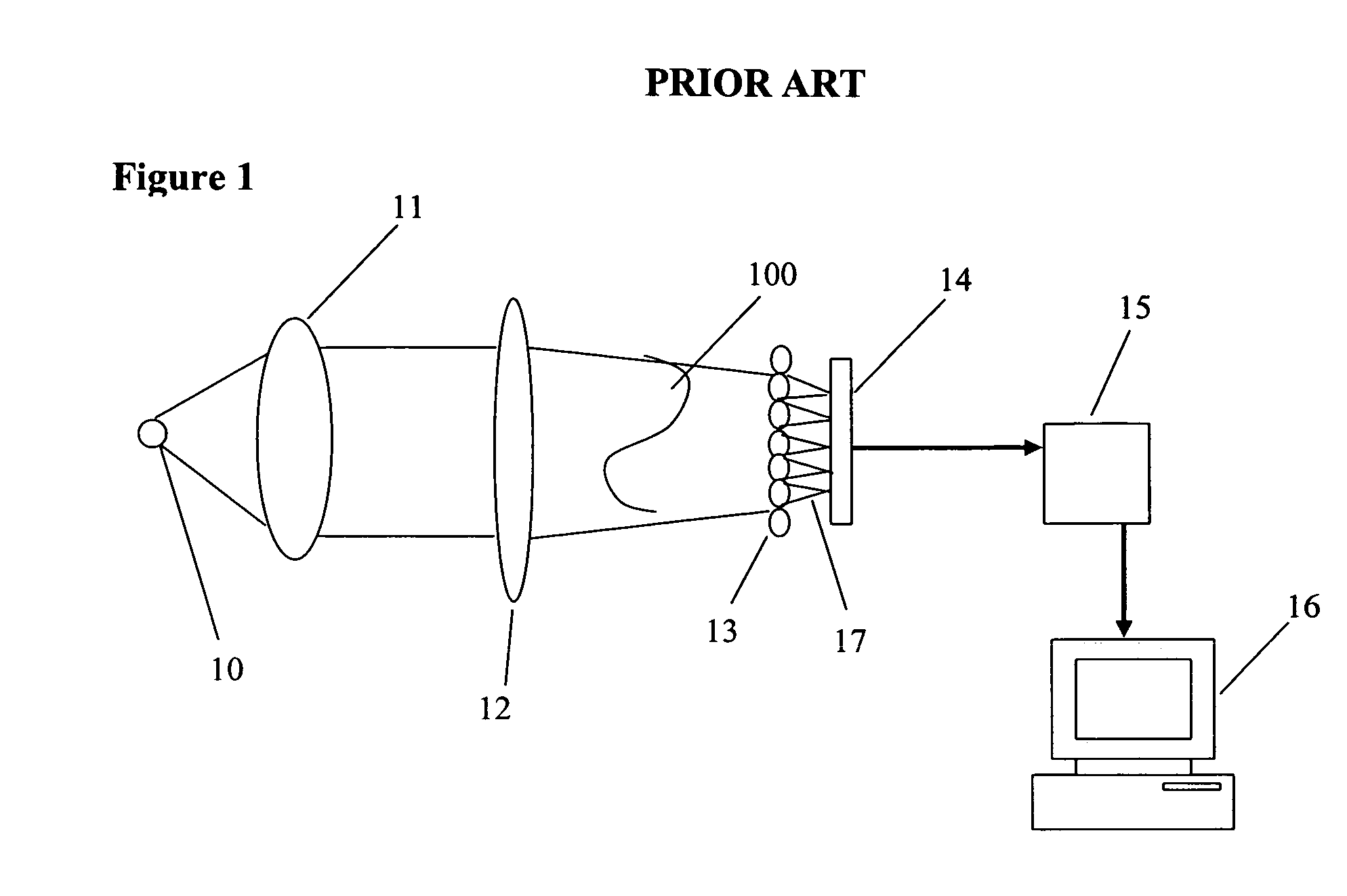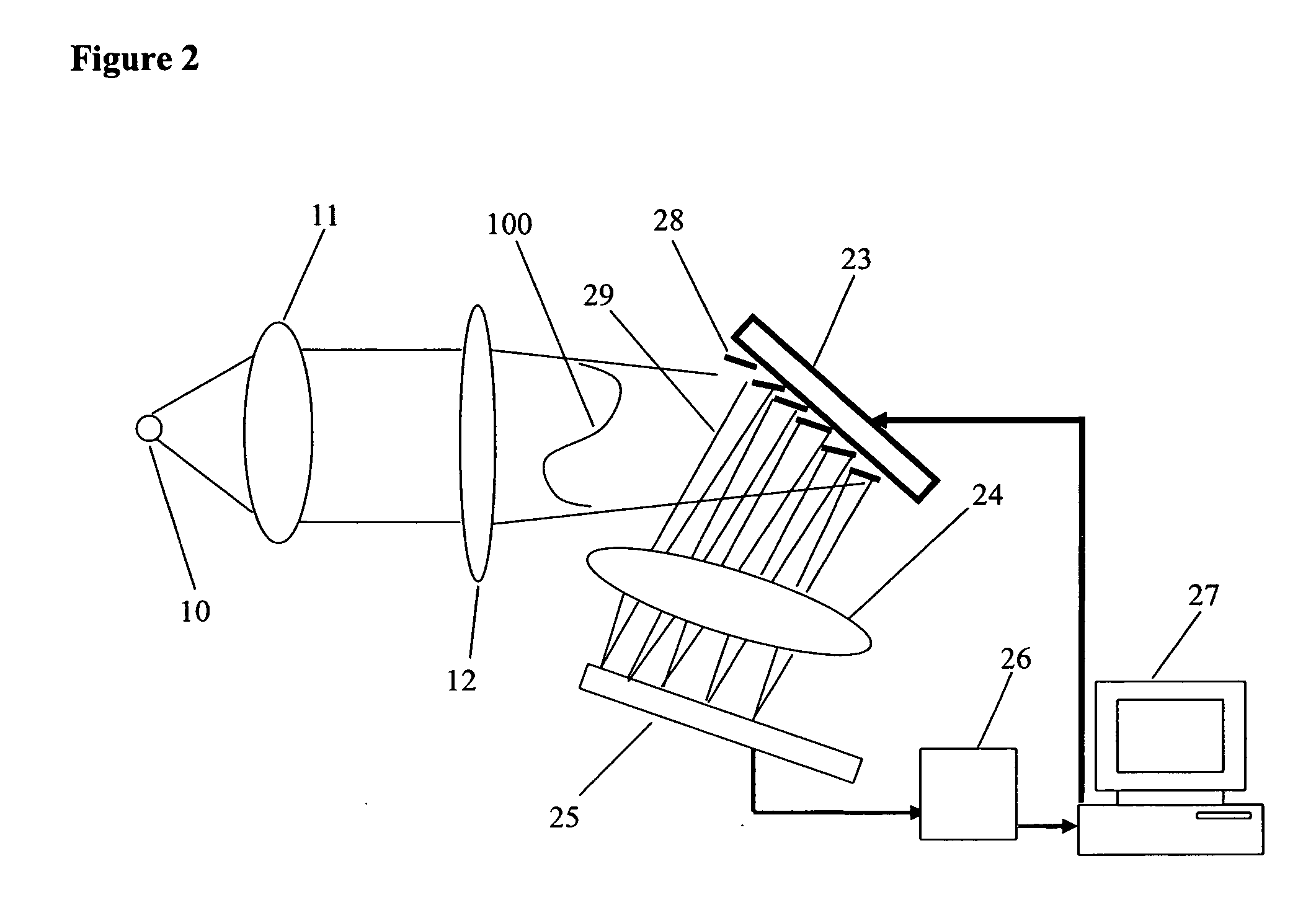Apparatus and method for optical wavefront analysis using active light modulation
a technology of active light modulation and optical wavefront, applied in the field of wavefront distortion analysis, can solve the problems of loss of all useful information, inability to overcome problems, density will correspondingly decrease, etc., and achieve faster and more precise wavefront profiling/analysis, the effect of dramatic increase in dynamic range and sensitivity
- Summary
- Abstract
- Description
- Claims
- Application Information
AI Technical Summary
Benefits of technology
Problems solved by technology
Method used
Image
Examples
Embodiment Construction
[0021]FIG. 1 is a schematic of a conventional SHS. A wavefront 100 created by light source 10 and a condenser lens or lens system 11 is distorted by an optical or other element 12 and dissected by a lenslet array 13 into plurality of sub fronts 17 that are focused onto a photo sensor 14. The signal from photo sensor14 is processed by the processor 15 and sent to personal computer 16 for final data analysis and wavefront reconstruction.
[0022] An embodiment of the invention is shown in the schematic of FIG. 2. A single ALMD 23 having reflective elements 28 is used in place of the conventional lenslet array of FIG. 1. (Such reflective ALMDs are commercially available from Texas Instruments (DMD), Silicon Light Machines, Corning, Agere Systems, Hitachi, Mitsubishi, Daewoo.) A wavefront or wavefront portion 100 created by light source 10 and a condenser lens or lens system 11 is distorted by an optical or other element 12 and then reflected by individual reflective elements 28 of an ALM...
PUM
 Login to View More
Login to View More Abstract
Description
Claims
Application Information
 Login to View More
Login to View More - R&D
- Intellectual Property
- Life Sciences
- Materials
- Tech Scout
- Unparalleled Data Quality
- Higher Quality Content
- 60% Fewer Hallucinations
Browse by: Latest US Patents, China's latest patents, Technical Efficacy Thesaurus, Application Domain, Technology Topic, Popular Technical Reports.
© 2025 PatSnap. All rights reserved.Legal|Privacy policy|Modern Slavery Act Transparency Statement|Sitemap|About US| Contact US: help@patsnap.com



